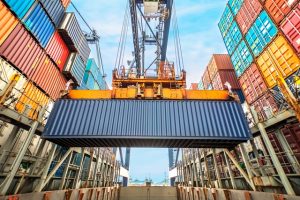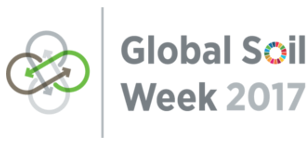The 2030 Agenda acknowledges the international responsibility of countries for the economic, environmental, and social effects related to high levels of consumption. These effects are often felt across national borders and are, in turn, influenced by trans-boundary dynamics and international trade. Germany, for instance, depends increasingly on imported agricultural products and is now the world’s third largest importer. According to Germany’s Federal Statistical Office and the German Environment Agency, more than 13 million ha of agricultural land are used in other countries to satisfy German consumption. This represents more than 70% of agricultural land in Germany.

Photo by waterfootprint.org
Globalization highlights the need to better understand these interconnections as there are environmental and socio-economic impacts attached to these imports, which can be observed in exporting countries and all along the supply chains. These are known as footprints and impacts. Examples of footprints and impacts include deforestation, soil degradation, displacement of smallholders, health risks from pesticides use, or eutrophication from fertilizer application.
Available trade statistics are insufficient to understand the international supply chains and the associated environmental and socio-economic footprints. While only some commodities are directly imported from the country where they were produced to where they will be consumed, others pass through different countries and ports before entering their final destination. In this case, the origin of the commodities remains invisible in bilateral trade statistics. Other commodities are only indirectly imported and embedded in more complex commodities, e.g. palm oil in cosmetics, or are used somewhere along a supply chain, e.g. soybeans used to produce imported meat from South America.
In order to fully address the responsibility dimension of the 2030 Agenda, new approaches and tools are required to better understand the increasingly longer and more complex supply chains, along which commodities are produced, processed and imported. We also need to get a better understanding of the associated externalization of environmental pressures and footprints. In order to contribute to this debate, the Stockholm Environment Institute (SEI), the Institute for Advanced Sustainability Studies (IASS) and Töpfer, Müller, Gaßner – Think Tank for Sustainability (TMG) conducted a study of the supply chains of soy from Brazil and oil palm products from Indonesia using Multi-Regional Input-Output (MRIO) modelling and Material Flow Analysis (MFA).
![]() First results indicate that the sum of direct and indirect imports of soy and oil palm products are 50 to 100% larger than direct imports included in conventional trade statistics. Land requirements are also substantial: the worldwide area used to cultivate soy for final consumption in Germany equals about 20% of all cropland in Germany. Our analysis also allows a more differentiated view of production areas within a single country. For example, we find that some areas of soy production in Brazil for export to Germany are severely water scarce and the additional water demand for soy is likely to aggravate water scarcity there.
First results indicate that the sum of direct and indirect imports of soy and oil palm products are 50 to 100% larger than direct imports included in conventional trade statistics. Land requirements are also substantial: the worldwide area used to cultivate soy for final consumption in Germany equals about 20% of all cropland in Germany. Our analysis also allows a more differentiated view of production areas within a single country. For example, we find that some areas of soy production in Brazil for export to Germany are severely water scarce and the additional water demand for soy is likely to aggravate water scarcity there.
Improved knowledge about the production of and trade in agricultural commodities is necessary to achieve an integrated implementation of the SDGs that connects environment and development related goals across different policy areas and ensures that progress in one SDG does not hinder progress in others. Our findings also highlight the importance for developed countries such as Germany to show leadership and to address sustainable consumption and production in implementing the 2030 Agenda.
More details about this work can be found in the recently published SEI-IASS paper:
Tracking Germany’s Biomass Consumption: Scientific Underpinning for the Implementation of the 2030 Agenda
We invite comments on the paper from readers to develop the discussions Forward!
